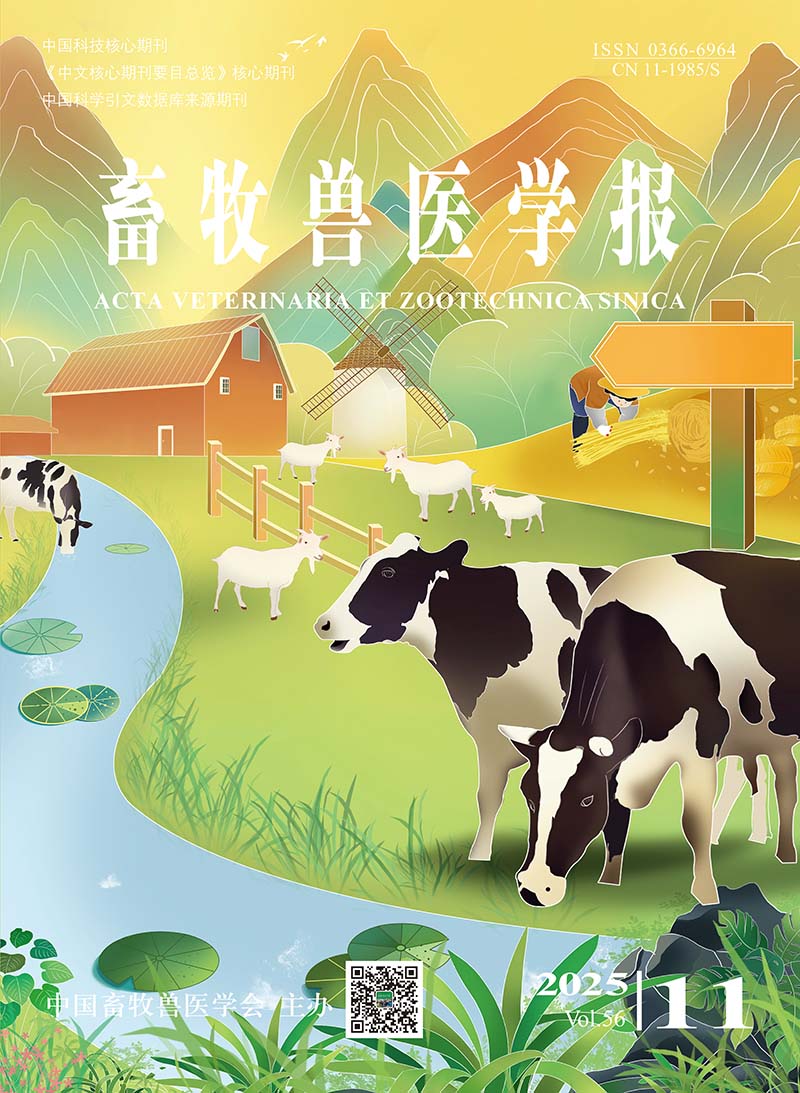-
Sequence Characteristics and Expression Analysis of CA5B Gene in Pigs
- GUO Jin, FAN Xinhao, YANG Yalan, LIANG Guoming, TANG Zhonglin
-
2021, 52(2):
322-330.
doi:10.11843/j.issn.0366-6964.2021.02.005
-
 Abstract
(
483 )
Abstract
(
483 )
 HTML( )
HTML( )
 PDF (5368KB)
(
477
)
PDF (5368KB)
(
477
)
-
References |
Related Articles |
Metrics
This study aimed to analyze the effects of CA5B (carbonic anhydrase 5b, mitochondria; CA5B/CAVB/Car5b) on the organ/tissue development and metabolism in pigs through investigating its sequence characteristics and spatial expression patterns. The heart, liver, spleen, lung, kidney, subcutaneous fat, longissimus dorsi, testis and ovary tissues of 3 boars and 3 sows of 240-day-old Guizhou pigs were collected, and the skeletal muscle tissues at 27 growth and development time points (33, 40, 45, 50, 55, 60, 65, 70, 75, 80, 85, 90, 95, 100, 105 days before birth and 0, 9, 20, 30, 40, 60, 80, 100, 120, 140, 160, 180 days after birth) of 3 Tongcheng pigs and 3 Landrace pigs were also collected. We performed transcription sequencing using RNA extracted from the above tissues, and analyzed the expression profile of CA5B gene in 9 tissues and it's temporal expression in skeletal muscle at 27 development time points. Then the conservative analysis among species, construction of phylogenetic tree and protein interaction network analysis of CA5B gene were conducted based on its protein sequence extracted from NCBI database. Finally, three softwares (Targetscan, PicTar, miRanda) were used to predict the potential miRNAs binded to CA5B gene. The RNA editing sites located in CA5B gene were also detected using the RNA editing database. The results showed that CA5B gene was highly conservative expressed in pig, human, mouse, monkey, cattle, horse, goat, sheep, dog and cat, moreover, the pig and human had higher homology than mouse based on the protein sequence of CA5B. Interaction network showed that CA5B protein mainly interacted with mitochondrial transmembrane transport protein, myosin-like coiled-coil protein, cytochrome family and other proteins. The CA5B was highly expressed in fat, testis and ovary, and the expression level in embryonic period was higher than that in postnatal period in skeletal muscle. In addition, target prediction results suggested that CA5B might be regulated by ssc-miR-22-5p (P<0.05), and there were 3 RNA editing sites in CA5B. The results suggested that CA5B potentially play an important role in skeletal muscle growth, development,energy storage and utilization in pig.






